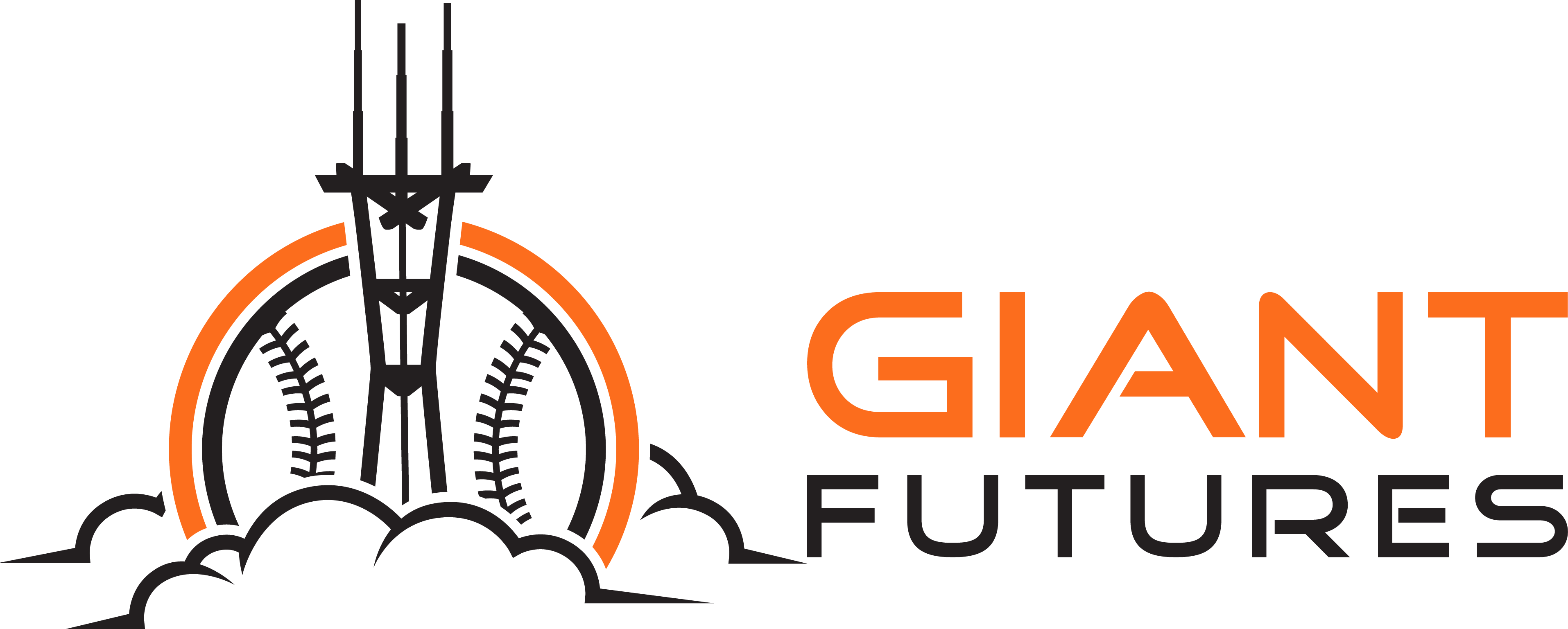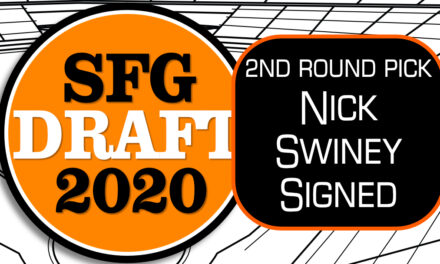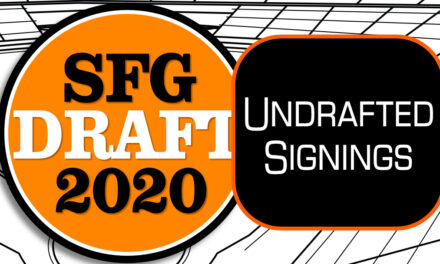On Sunday, July 11th, MLB’s draft returns, and it’s back to more than five rounds, although not as many as it used to be (20, rather than 40 in 2019). The MLB draft is hard to predict, and the further back the pick, the harder it is to predict who goes where. The Giants draft at #14 this year, one pick later than in 2020. That leaves the a lot of names on the board for who the Giants might pick.
So here, in one place, I’ve put together 11 names of players that the Giants have been connected to, or suggested they might take.
Predicting who a team might take sometimes is done by commentators looking for trends in a team’s history, like taking college hitters, or high school pitchers, etc. With only two drafts under their belt, it’s hard to make that call. The Giants have taken college hitters in the first round the last two years. But this year, there’s a serious gulf in college hitters around when the Giants will pick, and perhaps none of the three I’ll list here will be available.
Still, I’ll organize these players into three groups: college hitters, high school hitters, and pitchers (who are almost entirely college level). Who will the Giants choose from?
College Hitters
Sal Frelick
Put Frelick in the “It would be great if he slips” category. Frelick started the year ranked in the mid-teens, but an early hitting streak has put him in the top 10 in many rankings and mocks, though a late season cooldown has led him slipping a little. Frelick is a 5’9” outfielder with plus-plus speed, plus fielding, and potentially a plus hit tool. He’s got excellent contact skills, and has the plus makeup that the Giants have traditionally loved. In some ways, he has similarities to Hunter Bishop, as a player who came on strong his junior year after a less productive sophomore year, and who has a plus-plus offensive tool (speed rather than Bishop’s power) to go with excellent fielding. He would be an ideal kind of center fielder in big parks like Oracle. But that’s only if he made it to pick number 14.
Matt McLain
McLain was one of the first players getting mocked to the Giants this year, and he definitely remains in the conversation. The 5’10” shortstop has good hit skills with some power, above average speed, and a strong arm. He also has that excellent mentality that the Giants love, as he’s worked hard to improve his defense. There has been some question about his ability to stick at shortstop, but he has an arm that can handle third and certainly could also handle second. In a lot of ways, McLain’s profile bears similarities to Will Wilson coming out of college, with a nice set of overall tools rather than having any standout ones, and a future of being a potentially versatile infielder.
Colton Cowser
There aren’t a lot of college hitters with a good track record to go off of, but Cowser is one of them. Cowser has two years of strong hitting and all the right secondaries in that regard. He finished the season on an 18-game hitting streak, had more walks than strikeouts, and swung and missed at just 19 fastballs all season. He’s more hit than power, but scouts think he could add more power onto his frame. He’s a plus runner, and should be able to stay in center field in the near term with a solid arm. Cowser is considered one of the “safer” hitters to draft this year, so it’s not clear if he’ll still be there for the Giants at #14.
Pitchers
Ty Madden
Madden added some velocity this season, and that’s catapulted him to the top half of the first round. With his fastball that sits mid-90’s and touches 99, and a slider that’s more about movement than power, Madden has gotten the strikeouts. But what stands out more is that he brings that power with unusual control, having walked only 4 batters in 25 innings in 2020, though his walk rate was more average in 2021. He’s worked mostly with two pitches as a college starter, though he has a changeup and curve that both could be improved. His fastball doesn’t have a lot of movement, so he will rely on good pitch mixing and deception, as well as the control he’s proven he has, to be effective. There is some risk of him having to move to relief, but his ceiling is to be a front of the rotation starter.
Jordan Wicks
Wicks is the top left-handed pitcher available in the 2021 draft, and he is because of his fantastic changeup. It has excellent movement and a deceptive arm angle that hitters can’t pick up, and has been rated as a plus plus offering. After adding velocity to his fastball to reach the mid-90’s, that’s only made the changeup even more lethal. His other secondaries need to develop more, however, with a slider that has been inconsistent but shows promise, and a slow curveball. But because of that changeup, mixed with plus control, Wicks has the ceiling of being a top rotation pitcher if put into a good system, and a high floor fallback as a top reliever if he can’t develop the rest of his pitches enough to survive.
Sam Bachman
If you like nasty stuff, Bachman is your man. He has an argument for having both the best fastball and best slider in the draft. The former sits 94-97 mph and can get pushed up to 101, and unlike most high-velocity fastball, it has a lot of movement to keep hitters honest. His slider is in the mid-80’s with awesome movement. He’s got a good change up as well to work off of. As you might expect with a hard thrower, however, he has questions about walks (averaging 4.1 BB/9 in his first two college seasons), and there are some health concerns (he missed two starts with a tired arm). Obviously, his repertoire also screams closer material. Few pitchers have a ceiling like Bachman, but there’s a lot of reasons he might not make it.
Andrew Painter
High School right-handed pitchers are not popular in the first round, but Andrew Painter is making a lot of teams think. He has both good stuff, led by a low-mid-90’s fastball, but also an advanced repertoire and approach to pitching. He throw both 2 and 4-seam fastballs, a 12-6 curve, a slider, and has shown a change up that could be a plus pitch. He also has plus control now, and has the potential to have excellent control in the future. Also, at 6’6”, he has a farm that could add even more velocity onto his fastball. Will teams overcome that prep right-handler bias to draft Painter high in the first round? It might be a longer wait for success, but there’s a lot to like about what Painter throws.
Gunnar Hoglund
Where Hoglund gets picked could be one of the more interesting stories of the draft. A very hot start to 2021 had Hoglund racing up the ranks to be a Top 10 draft pick, but he had Tommy John surgery, which has made his landing spot more questionable. This season before the surgery, he was 92-94 with his fastball and has a plus slider and a plus change up to work with. But it was his ability to spot all of his pitches that really made him stand out. Any team drafting him will have to worry about how well Hoglund will recover, and will have to wait until mid-2022 to really get to see what he can throw. The risk is obvious, but the reward could be a Top-10 quality pick at a mid-1st round price.
High School Hitters
Benny Montgomery
Lots of players have been connected to the Giants, but one of the players most regularly said to be someone the Giants are interested in is Montgomery. He’s a big, athletic player with a 70-80 grade run tool (80 is the max on the scouting scale), and with a strong arm. Montgomery has showing the potential for power, mostly in batting practice, but his hitting ability is far behind his other tools. The team that drafts him will have to develop that skill to ensure he can use his speed on the basepaths, but even without hitting, he would be a top tier defensive center fielder for whomever drafts him.
Bubba Chandler
Chandler could very well be the most athletic player in this draft, and that could be the biggest problem for him. He’s a two-way player, with four above average pitches, and a fastball that sits 93-95 and reaches 97 already. On the field, he’s an athletic shortstop with above average fielding and a strong arm, and a developing hit tool as a switch hitter. The problem is that he’s also a top quarterback, and Clemson has given him a football scholarship to be a quarterback. It’s said he prefers baseball, but being a quarterback on a top college program is very tempting and a much bigger potential payday, if also much riskier health-wise. Chandler has some real Kyler Murray vibes, and any team drafting him is taking a risk.
Harry Ford
Catcher? Yes, catcher, but maybe not completely a catcher. With a 60 run tool, Ford brings the ability to potentially play in center field, or in the infield at second base. The athleticism matched with some power and good bat-to-ball skills are why he’s been mentioned as high as he has in the draft. However, there’s a lot of unknown to him, from his still developing approach at and behind the plate, and right down to where he will play on the diamond in the future. And unlike the forced talk about playing catchers at first with Patrick Bailey and Joey Bart (the latter of whom still has yet to in any pro game), Ford would bring real versatility to a management team who would love that.







Recent Comments